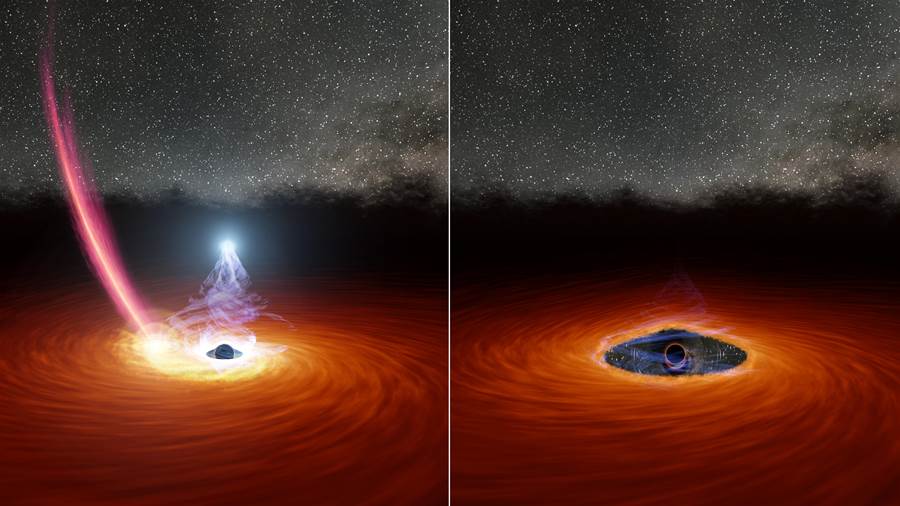
In a fascinating revelation, scientists have discovered that a black hole is swiftily fleeing from its own galaxy. This astonishing finding challenges the traditional understanding of how black holes interact with their host galaxies.
The bizarre event was captured by the National Aeronautics and Space Administration's (NASA) Chandra X-ray Observatory. The black hole, designated J0437+2456, was observed at the outskirts of a galaxy located 230 million light-years away. Surprisingly, it appeared to be moving at an incredible velocity of about 7.5 million kilometers per hour, creating distance between itself and its galaxy.

Typically, black holes are thought to play a vital role in their galaxy's formation and evolution. They are imagined to be at the center, fueled by the surrounding gas and stars. However, the newfound black hole's behavior contradicts this preconception, as it seems to be escaping its galaxy rather than residing at its core.
While scientists are still puzzled by this phenomenon, they speculate several possible explanations. One hypothesis suggests that the black hole was formed through a collision between two galaxies, resulting in a powerful gravitational kick, propelling it outward.
This intriguing discovery sheds light on the vast complexities of black holes and the intricate dynamics within galaxies. Further research and analysis will be carried out to deepen our understanding of this peculiar event, and unravel the mysteries behind the behavior of black holes in the vast expanse of space.








